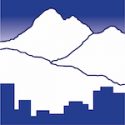Neck, Back and Spine Pain
Sources of Neck, Back and Spinal Pain
- Radicular Pain (Sciatica)
- Disc bulges, degeneration, herniation, and protrusions
- Spinal Canal Stenosis
- Foraminal Stenosis or Narrowing
- Ligamentum Flavum Hypertrophy
- Disc Osteophyte Complexes, Osteophytes
- Epidural Lipomatosis
- Facet (Zygapophyseal Joint) degeneration, arthrosis, hypertrophy and synovial cysts
- Pars Defects (Pars Interarticularis Fractures)
- Discogenic Pain
- Sponylolysis
- Spondylolisthesis, Anterolisthesis, Retrolisthesis
- Spondylosis
- Schmorl’s Nodes
- Modic Changes
- Sacroiliac Joint Dysfunction/Injury
- Pelvic, Sacral and Coccygeal Fractures
- Vertebral Burst and Compression Fractures
- Spinal Cord Injury
- Myleomalacia
- Multiple Sclerosis
- Cluneal Nerve Neuralgia/Entrapment
- Amyotrophic lateral sclerosis (ALS)
- Autoimmune or Inflammatory Spondyloarthopathy (Spondyloarthritis)
- Ankylosing Spondylitis
- Psoriatic Arthritis
- Rheumatoid Arthritis
Treating Your Pain Starts with a Proper Diagnosis
Dr. Urban, a physician anesthesiologist and fellowship trained interventional pain specialist will start by reviewing your pain symptoms and medical history. He will LISTEN to YOU about your pain and complete a comprehensive hands-on physical examination to help locate the origin of your pain. Frequently he tells patients that there may be three sources which could cause similar type pain in the neck, back and spine and sometimes more than one may be the cause. Diagnostic tests such as an X-ray, CT scan or MRI may be needed to confirm the cause of your pain. Past treatments with success or failure will be taken into consideration.
Treatment Recommendations May Include:
- Interlaminar Cervical, Thoracic or Lumbar Epidural Steroid Injections
- Cervical or Lumbar Transforaminal Steroid/Local Anesthetic Injections
- Selective Nerve Root Blocks (SNRB)
- Caudal Epidural Steroid/Local Anesthetic Injections
- Cervical, Thoracic or Lumbar Diagnostic Medial Branch Blocks
- Cervical, Thoracic or Lumbar Percutaneous Radiofrequency Neurotomy (Radiofrequency Ablation or RFA)
- Facet Injections with cyst aspiration/rupture
- Provocation Discography (Discogram)
- Neuromodulation (Spinal Cord Stimulator)
- Dorsal Column Stimulation
- Percutaneous Trial
- Permanent Percutaneous Implantation
- Rechargeable and Non-rechargeable
Implanted Pulse Generator (IPG)
References:
1 Medline Plus. Back Pain. http://www.nlm.nih.gov/medlineplus/backpain.html. Accessed July 22, 2014
2 National Institute of Neurological Disorders and Stroke. Low Back Pain Fact Sheet. http://www.ninds.nih.gov/disorders/backpain/detail_backpain.htm. Accessed July 21, 2014
3 Centers for Disease Control and Prevention. Health, United States, 2012. http://www.cdc.gov/nchs/hus/contents2012.htm#047. Accessed July 21, 2014
4 Buchbinder, R. et al. Placing the global burden of low back pain in context. Best Practice & Research Clinical Rheumatology 27, 575589 (2013).
5 Goodman, D. M., Burke, A. E. & Livingston, E. H. JAMA patient page. Low back pain. JAMA : the journal of the American Medical Association 309, 1738 (2013).

